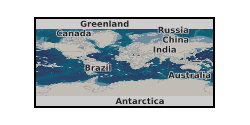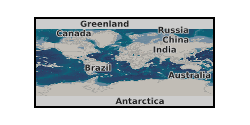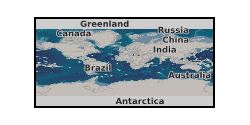Attenuation
Type of resources
Available actions
Topics
Keywords
Contact for the resource
Provided by
Years
Formats
Update frequencies
-

Shear-wave attenuation anisotropy can provide constraints on mantle melt, such as that present beneath the Ethiopian rift. This package contains codes implementing a new methodology to measure such attenuation anisotropy, as well as a suite of synthetic data to demonstrate its utility. This method has been applied to SKS phases recorded over a decade at seismic station FURI in Ethiopia. The package provides these data, and the resulting derived measurements. The study, and the material provided here, are described in Asplet et al 2024 "Shear-wave attenuation anisotropy: a new constraint on mantle melt near the Main Ethiopia Rift" which is accepted for publication in Seismica.
-

This is a generic powerpoint showing results from azimuthal Q analysis of seismic data collected during the JC152 cruise (Bull et al., 2018). The presentation gives an introduction to the CHIMNEY project and study area. Data from 2 sources (GI guns and Surface sparker) are analysed, giving rise to measurements of attenuation as a function of two-wave time, azimuth and frequency at two locations. The data are inverted using a rock physics model, and probability distributions for matrix permeability and fracture size at the two sites are developed. Reference: Bull, J. M. (2018). Cruise Report – RRS James Cook JC152: CHIMNEY - Characterisation of Major Overburden Pathways above Sub-seafloor CO2 Storage Reservoirs in the North Sea Scanner and Challenger Pockmark Complexes,University of Southampton, 55 pp. Available at: https://eprints.soton.ac.uk/420257/ NERC Grant - Characterization of major overburden leakage pathways above sub-seafloor CO2 storage reservoirs in the North Sea (CHIMNEY)
-

This dataset is of laboratory ultrasonic shear wave measurements during methane hydrate formation in water saturated Berea sandstone using pulse echo method. We formed methane hydrate and took shear wave measurements during the formation process at different time interval. The hydrate saturation was calculated from measured pressure and temperature changes. This data set was used to show how shear wave velocity and attenuation can be used to estimate permeability of hydrate-bearing geological formations. We observed that velocity and attenuation both increase with hydrate saturation, with two peaks in attenuation at hydrate saturations of around 6% and 20% that correspond to changes in gradient of velocity. These laboratory experiments were conducted in National Oceanography Centre, Southampton by Sourav Sahoo with technical support provided by Laboratory Manager Laurence North. Sourav Sahoo interpreted the data. The hydrate formation process continued for few days and measurements were done mostly during daytime due to limited laboratory access during the night. This data set has been used for the paper published in Journal of Geophysical Research: Solid Earth (DOI 10.1029/2021JB022206)
-

The use of synthetic samples for rock physics experiments in the lab is a common practice for reservoir characterization and reservoir studies. This dataset gather ultrasonic P- and S-wave velocities and attenuations, electrical resistivity, axial and radial strains, permeability and mineralogical composition, of two synthetic and two natural sandstones, measured at variable realistic reservoir conditions of stress. The data were collected during an original study which aimed to assess the extent to which the measured properties between synthetic and natural sandstones are comparable. The work was accepted for publication in Geophysical Prospecting on the 01/10/2018, which can be accessed following the link: https://doi.org/10.1111/1365-2478.12699 Falcon-Suarez, I.H., Amalokwu, K., Robert, K., North, L., Best, A.I., Delgado-Martin, J., Callow, B., Sahoo, S.K. (accepted). Comparison of stress dependent geophysical, hydraulic and mechanical properties of synthetic and natural sandstones for reservoir characterisation and monitoring studies. Geophysical Prospecting
 NERC Data Catalogue Service
NERC Data Catalogue Service